Find out all about the real benefits of low-carb diets and what they can do to make your life better right now.
Table of Contents
Why is the People Becoming Fat?
Obesity and weight increase have become major health issues in the Western world.
Obesity, in particular, is one of the major avoidable causes of mortality in the world today.
Several studies have been undertaken to determine why the global population seems to be gaining weight. According to research, the overall weight of the population now is substantially greater than it was in the 1960s.
What reasons have led to this turn of events, and what intervention measures can be implemented to control it? According to studies, even when our children continue to participate in physical activities, they continue to gain weight and, in some circumstances, become obese. Lack of exercise, among other factors, has been suggested as a cause of weight increase or obesity in the elderly.
Obesity and weight increase have been linked to the meals we consume. According to research, we have increased our food consumption, which regrettably has a larger proportion of sugar than the global population consumed fifty years ago. In addition, the quantity of fat we consume has significantly grown. This, along with a lack of activity, has been identified as the primary cause of weight increase. Our calorie intake increases when we consume big amounts of fatty meals, creamy desserts, alcoholic beverages, and sugary soft drinks. We are required to undertake a lot of activities to burn off the extra calories when we consume more calories. If this is not done, calories accumulate, leading to weight gain.

The capacity to adjust our eating patterns is the key to solving these difficulties. Eating low-carb meals is one method of preventing needless weight gain. The number of calories in the diet is tightly managed in this manner, which helps to make one healthy.
Low carb diets have been described in several ways depending on whether the focus is on the number of calories received from carbs or the proportion of carbohydrates in a diet. Low carb diets, on the other hand, may be defined as those that enable the body to draw between 5% and 45 % of its calories from carbohydrates. According to US health standards, the usual amount of calories that should be generated from carbohydrates is between 50 and 65 percent. As a result, a low-carb diet is a deliberate attempt to reduce the consumption of foods with high carbohydrate content, particularly those that induce a considerable increase in blood sugar.
Although the controversy over the benefits of a low-carb diet continues, it is clear that carbohydrate tolerance differs from person to person. This form of diet, thus, will suit or assist individuals who are sensitive to carbs or have a poor tolerance to them. The strategy is to stimulate carbohydrate consumption to levels that the body can handle. This strategy focuses on reducing or eliminating substances from our diets such as potatoes, white rice, white flour, and sugar.
People have been observed to lose weight when their carbohydrate consumption is reduced. To address this, a low-carb diet should be regularly watched so that indicators of weight loss are instantly noted; carbohydrate consumption is gradually increased until the body can regulate blood glucose. It is also recommended to follow a ketogenic diet, in which the body derives energy from fat rather than glucose. This causes the body to undergo fat adaption or ket adaptation. This adaptation increases body metabolism, which improves stamina. Energy from fat lasts longer than energy from glucose, which rapidly depletes.
What Is A Low Carb Diet?

We frequently hear about low carb diets and how effective they are in losing weight, but what exactly is a low carb diet?
The word “low-carb” refers to a diet that is low in carbohydrates. Carbohydrates may be found in meals such as pasta, potatoes, fruit, bread, and rice. A low carb diet does not involve any particular diet or well-defined weight-loss strategies.
It is a pretty ambiguous phrase that differs depending on who uses it. Consuming low carbohydrate and glycemic meals is one of the most typical characteristics. Carbohydrate ingestion causes the body to excrete insulin.
As carbs are digested, glucose – the result of insulin excretion – is either used by our bodies if we need immediate energy or stored as fat. More importantly, after ingesting a meal high in carbs, the level of insulin in our bodies rises sharply and then falls sharply. This impact leads us to feel hungry just 2 or 4 hours after our previous meal, trapping us in a vicious cycle of hunger, eating, and fat storage.
Following the original question “What Is A Low Carb Diet?” the primary approaches to describe a low carb diet is to specify whether you are talking about the actual carbohydrate that an adult eats daily or the proportion of calories in a person’s diet that comes from carbs.
The typical quantity of calories permitted in an adult’s diet is roughly 50-60%. So any proportion of calories derived from carbs that is less than that might be considered low carb.
The most widespread myth regarding low-carb diets is that those who follow this kind of eating plan are trying to ingest no carbs at all. That is not only false, but also almost impossible given that carbs are buried in the majority of the food we eat, particularly processed food.
A low-carb diet, as the name implies, attempts to minimise carbohydrates but not fully eliminating them.
Another common misconception is that eating fruits and vegetables is prohibited on a low-carb diet. The reality is that this food group is high in carbohydrates, but that does not imply that it should be avoided. Carbohydrates from fruits and vegetables should be consumed in a diet that is low in carbs but not deficient in carbs.
The most obvious advantages of adopting a low carb diet are weight reduction and increased energy. Individuals are less drowsy and have higher focus, and some examples have demonstrated that people are in a better mood.
Bad thoughts and emotions seem to be much diminished or removed. The benefits of low-carb eating habits cannot be overstated. People have noticed improvements in their metabolism, which is thought to be a good starting point for a weight-loss diet, even if the weight loss is initially insignificant. A metabolic change is required on the path to a healthy lifestyle and weight reduction process.
The Benefits Of A Low Carb Diet

When selecting a diet, you want to ensure that there are several favorable side effects in addition to weight loss. You want to be healthy overall by eating the way the plan recommends you do on a regular basis. You also want to be able to stick to the plan for the rest of your life, not just for a few weeks or months. The advantages of a low-carb diet will offer you a healthy daily regimen that you may follow for the rest of your life.
You may be unaware that consuming carbohydrates increases your risk of developing health problems. Some medical disorders that you often face may become less frequent if you reduce the number of carbohydrates you consume on a regular basis. When you lower your carbohydrate consumption, the frequency of headaches, joint discomfort, and difficulty focusing will decrease. When the pain from headaches and joints subsides, you may be able to lower the quantity of pain medication you need. As a result of the advantages of a low-carb diet, you will feel better and save money on drugs.
When dieting, mood fluctuations may make the process tough. Binge eating may be triggered by mood and energy swings. Another advantage of the low-carb diet is the improvement of mood and energy levels. Protein and other nutrients provide more steady energy to the body than carbohydrates. Carbohydrates provide short-term energy spikes that soon fade as the carbohydrates are digested. By limiting your carbohydrate intake, your energy will come from other nutrients that provide more constant energy, eliminating mood and energy fluctuations.
A low-carb diet might assist if you like exercising and want to tone and develop muscle tissue to help battle fat in your body. Your muscles are particularly responsive to insulin after an exercise and do not need as many carbohydrates as some people believe. After an exercise, eating a low-carb diet allows your muscles to absorb more amino acids from your food. The amino acids will assist the muscles to recover faster from the exercise and burn more fat.
A low-carb diet may assist with the effect or prevention of diabetes. A low-carb diet may help you regulate your insulin levels better throughout the day if you have diabetes. If you have diabetes in your family and wish to prevent developing it yourself, a low-carb diet is an excellent healthy method to naturally balance your insulin.
As you can see, there are several advantages to a low-carb diet that go beyond just reducing weight. Your weight will improve, but you will also have more energy and feel better.
That is also the purpose of decreasing weight: to be healthy.
Eating more veggies, meats, fruits, and nuts may help you get started on a low-carb diet. Reduce your consumption of bread, sweets, and other things prepared with white flour and sugar gradually. Many low-carb diet recipes are available for free on blogs, websites, and food preparation television programs.
Are Low Carb Diets Safe?
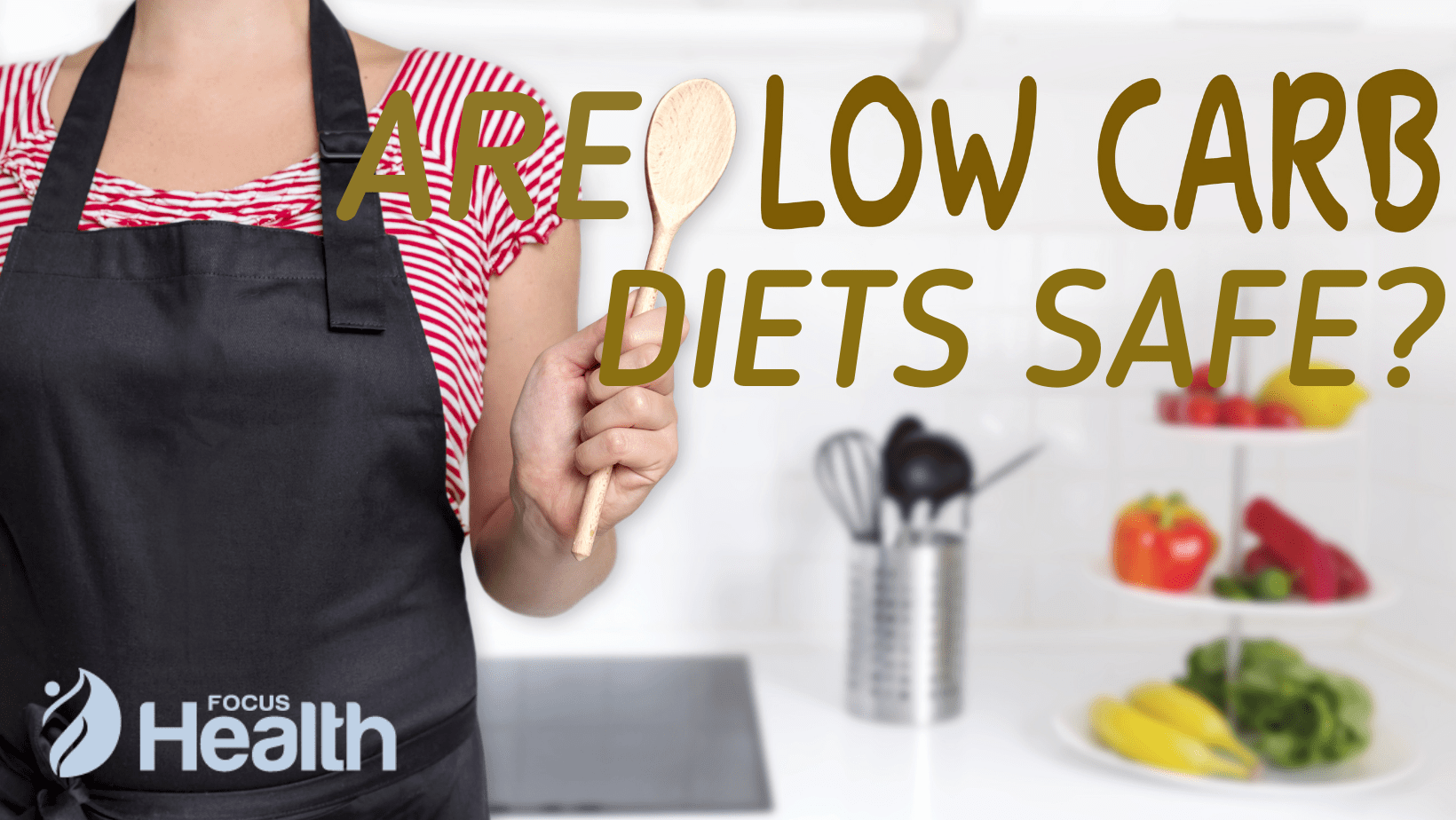
Obesity must be the most widespread problem on the planet, regardless of demographic or geographic variances. Weight reduction has recently received so much attention that it has created dozens of potential business possibilities. Surprisingly, this commercialization seems to be having a detrimental influence on genuine weight reduction.
Calorie intake and calorie expenditure, the two primary factors in the weight reduction equation, have been exaggerated so much in the commercial sector that certain weight loss methods are dangerous to one’s health.
The low-carb diet came into being as a strategy for keeping the calorie intake changeable at exact amounts. It’s basic reasoning how it may assist you to lose weight. When calorie intake is reduced, the body begins to utilize stored fat, resulting in weight loss. Of sure, it will result in weight reduction, but will the procedure be safe?
There is no easy yes or no response. Despite the fact that weight reduction experts repeatedly highlight the relevance, dietitians and the medical community have a different perspectives. The recognized belief is that no matter how good the outcomes are unless the carbs are reduced at a modest level, the adverse effects will lead to body function difficulties. It must not only be reasonable but also carefully packed.
For example, reducing fat consumption without considering the kind of fat may result in higher blood cholesterol levels. You should be knowledgeable enough to discern what should and should not be included. In this case, a well-structured diet plan would have incorporated polyunsaturated and monounsaturated fats, both of which are deemed safe.
The same idea applies to other nutrients as it does to lipids. Some diet regimens even advise against eating fruits and vegetables. Such schemes are more harmful than beneficial. A prohibition on fruits with a high glycemic index, such as bananas or watermelon, may have some reasoning behind it.
However, restricting all fruits and vegetables is unfounded advice that will harm your health.
Reduced consumption of calcium-rich foods such as whole grains may potentially lead to severe illnesses such as osteoporosis. Women who are deficient in calcium often have menstruation problems. The majority of low-carb diet programs place a greater emphasis on protein consumption. Unnecessary protein causes the kidneys to work harder to eliminate the extra waste created by proteins. Kidney stones may be caused by the accumulation of toxic waste materials.
Most significantly, before choosing a diet plan, one should thoroughly understand his or her own physique. A kidney sufferer should concentrate on proteins, while a heart patient should focus on fats. Similarly, there are various considerations to consider before embarking on a low-carb diet.
Modifications in your lifestyle will need changes in your nutrition. When you begin working out or bodybuilding, your body’s energy needs to change from what it was before. If you get pregnant, adjustments should occur promptly. In situations like these, contacting a specialist is essential.
Extreme “low carb” diets may be dangerous. However, follow “proper carb” diets to get the slim figure you’ve always desired while being healthy.
A Low Carb Sample Meal Plan
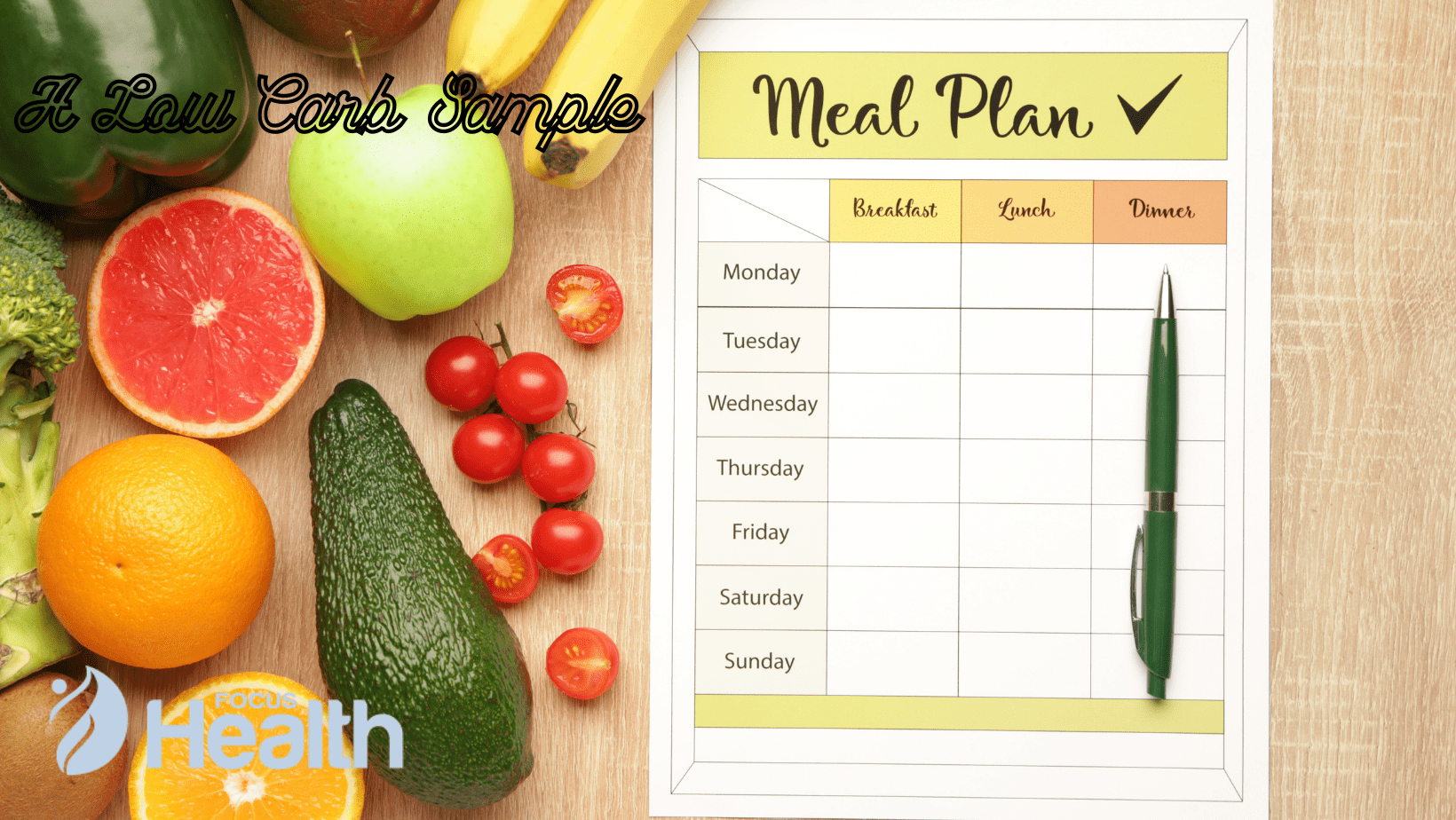
While there are an infinite number of possible versions of a low-carb diet plan that can be found and learned about online, it is critical to at least know a few fundamental meal plan ideas to kick start your low-carb dieting attempts. While the following meal plan ideas are plenty to get you started, it is vital to remember that “variety is the spice of life,” so be sure to learn about and extend your low-carb dieting meal choices.
Breakfast
Option 1:
- 7 egg white omelet – 2 yolks only 1 cup vegetables, such as mushrooms/capsicums
- 2 plain corn tortillas (as an alternative to bread)
Option 2:
- 1 cup Oats (cooked 2 cups) – (add 12 cups of water to oats, then microwave or consume cold) (the alternative is special K flakes or plain muesli with no dried fruit)
- 12 cup frozen berries or 1 heaping tablespoon natural pineapple
Lunch
Option 1:
- three hard-boiled eggs
- Your choice of big green leaf salad
- 2 tbsp low carb commercial or homemade salad dressing
- Optional: Garnish with Spicy Sweet Pecans.
Option 2:
- 200g cooked lean meat: chicken breast, any kind of fish, rump steak, eggs (10 egg white) (230g raw)
- 1 cup of greens (coleslaw, herb slaw packs at supermarkets, frozen vege is fine)
- 1 tbsp. light oil dressing (Italian, french or olive oil)
- 1 cup cooked Basmati rice (1 cup raw equals 1.5 cups cooked) Alternatively, a medium sweet potato (fist size)
Afternoon Snack
Option 1:
- 1 oz string cheese
- Option 2:
- 20 Plain Nuts = cashews/almonds or walnuts (inside palm size)
Dinner
Option 1:
- 6 egg omelet with 6 smoked salmon pieces and salad on the side
Option 2:
- 200g Grilled Chicken
- 2 full cup greens (coleslaw packs as mentioned)
- 2 Tablespoon Lite Cottage Cheese – OPTIONAL
Dessert
Option 1:
- 8-10 strawberries, dipped in
- ¼ cup sugar-free chocolate sauce (ganache)
Option 2:
- ½ cup of low sugar Jell-O
Shopping Advice For Low Carb Dieters

Carbohydrate restriction should not cost you a lot if you want to reduce weight or remain healthy. That is why having high-priced items in your diet is not required. There are other low-carbohydrate choices that are less expensive and tasty. So, let’s get started saving money on the best low-carb meals.
First and foremost, we all know that packaged food is expensive. Replace it with home-cooked meals prepared with tender meat and fresh veggies. Pre-packaged junk meals will just deplete your bank account while doing nothing for your girth.
You should then think about buying food that is in season. Of course, you’d dress warmly in the winter and lightly in the summer. Similarly, you should order fruits and vegetables when they are in season since they are the cheapest. Otherwise, importing products from other nations is too expensive. However, by buying in-season veggies and even freezing them, you may have your favorites year-round and at a low cost.
It is also feasible to save money on beef. While the pricey beef tenderloin is a good piece of meat, the chuck and sirloin cuts provide a delightful flavor at a far lower cost. They have streaks of fat running through the flesh, which makes them soft, juicy, and delectable. They are best suited to slow cooking, so consider soups, stews, braises, and roasts.
Similarly, a protein that is reasonably priced helps you stretch your cash. There’s more to carbohydrate management than meat – don’t get stuck in a dinner rut. Break up the monotony of your dinner meat with some eggs. Furthermore, you may cook them whatever you want: poached, scrambled, omelet, crustless quiche, and so forth. Furthermore, tofu and other soy foods may replace traditional sources of chicken and turkey protein while providing a range of nutrients.
You may also save money on snacks. Low-carb snacks, like smoothies and nutrition bars, are inexpensive when purchased as shop specials. Purchase in quantity. Recognize websites that sell stuff that you consider to be yours.
favorites, and subscribe to their emails to stay up to date on discounts. Don’t forget to look for coupons in newspaper circulars.
Additionally, prepare meals that can serve double recipes so that you may eat supper on one or two additional evenings. Similarly, prepare dishes that may double as lunch the following day. Make the most of your low-carb leftovers.
And you may have heard of this before planning. However, by organizing your recipes and meals for the week, you can ensure that you are always prepared. You won’t have to make a special trip to the vending machine or get take-out for supper. Do you really want all that crap in your stomach?
Learn some savvy purchasing methods, among other things. Get less expensive cuts of pork, such as shoulder and rib chops, which should be tastier when properly cooked.
Additionally, buying a whole chicken will save you money.
I hope the recommendations above help you save money while shopping for excellent low-carb items. As previously said, a low-carb diet should not be prohibitively expensive. Have fun shopping.
Eating Out On A Low Carb Diet
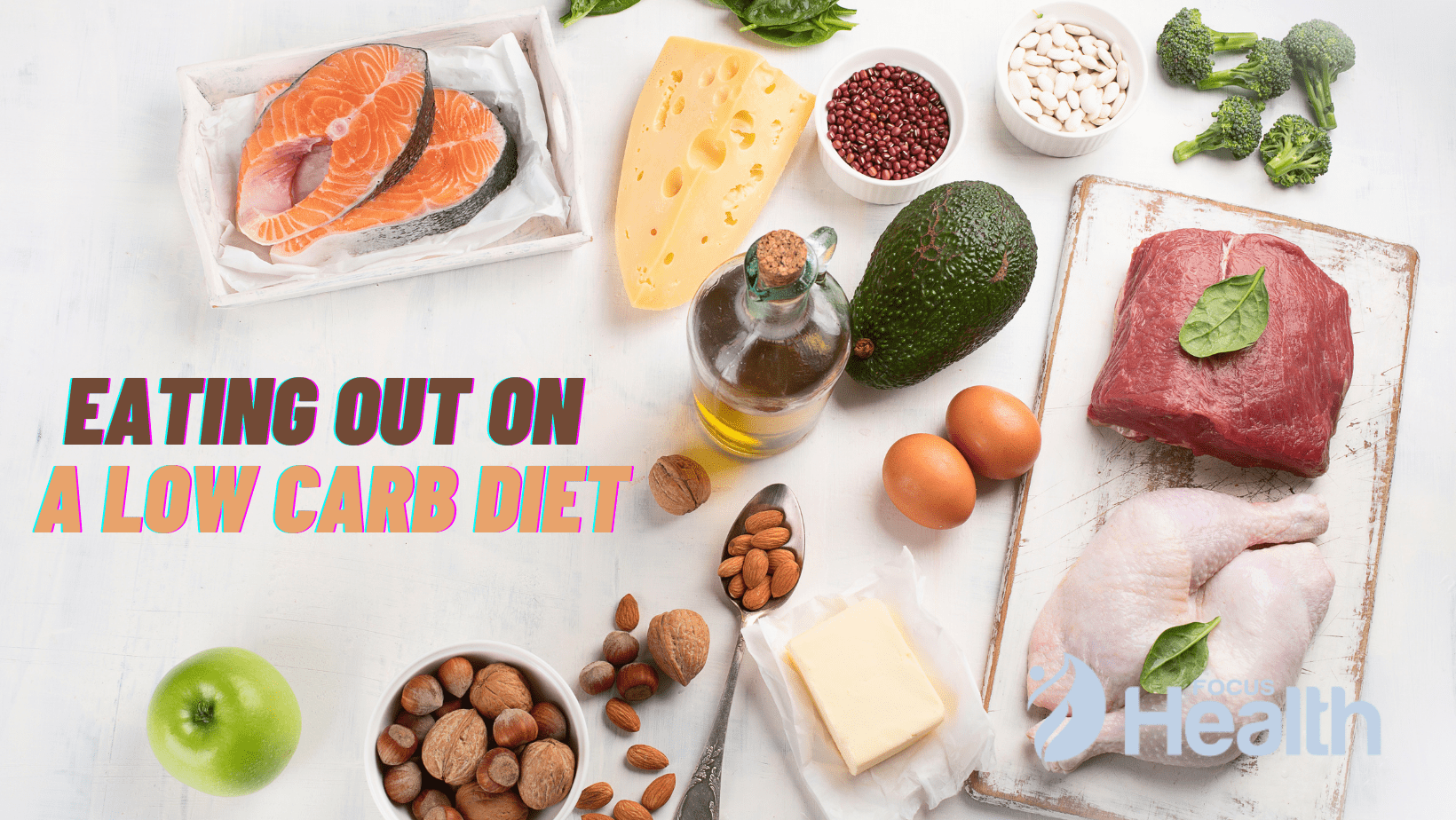
Dieting may be difficult if you are always concerned about what meals you can and cannot consume.
Eating out while dieting might be a pain at times. Eating out on a low-carb diet, on the other hand, is the polar opposite. It is quite simple to adapt dishes from practically any cuisine at any restaurant to a low-carb diet.
When eating out, just knowing three things will keep you on track:
- Know what you can eat, and what to avoid!
- Plan ahead!
- Stick to your guns!
Eating low carb allows you to be more flexible with your diet. Knowing which meals to avoid allows you to dine out without having to guess what is appropriate. When dining out, aim for meats that have not been breaded or battered, vegetables, salads, and seafood that has not been battered. Potatoes are often off the menu, so why not substitute additional vegetables? Consider eating “out of the box.” If you want a juicy burger, get it without the bread. To balance off your lunch, swap out the fries with carrot sticks. Salads provide a plethora of alternatives since practically any meat or veggie may be placed in, and many restaurants provide some form of salad on their menu. Steak with mixed veggies is always a delicious option!
Perhaps the most underestimated aspect of dining out on a low-carb diet is preparing ahead of time. This little action may save you a lot of anxiety and tension. You’ll already know what you can eat, so the next step is to find out what’s available in the restaurant you wish to visit. View menus online ahead of time. You may also contact the restaurant and inquire about dish preparation and ingredients. This way, you’ll be equipped with the knowledge you need to make wise eating choices. This step removes the stress and concern over what you’ll order once you arrive, allowing you to concentrate on enjoying your dinner!
The most essential thing you can do while eating low-carb in restaurants is to stick to it. Many people are enticed by the bread basket and tormented by the dessert plate, and they succumb to the urge to be ‘normal.’ Perhaps you don’t want to seem demanding. Whatever the cause, remember that you deserve to be well and happy. If it helps, think of your low-carb diet in the same way that someone who needs a particular diet for a medical issue does. Some meals will be off-limits, but don’t be scared to request the ones you can!
As more consumers opt for a low-carb diet, eateries are modifying many of their menu items to comply. If you want to go out and enjoy low-carb dishes, there are many fantastic alternatives. Knowing what you can eat, preparing ahead of time, and keeping to your plan can help you stay to your low-carb diet. Use these easy techniques to enjoy low-carb dining out whenever you want!
Maintaining A Low Carb Diet
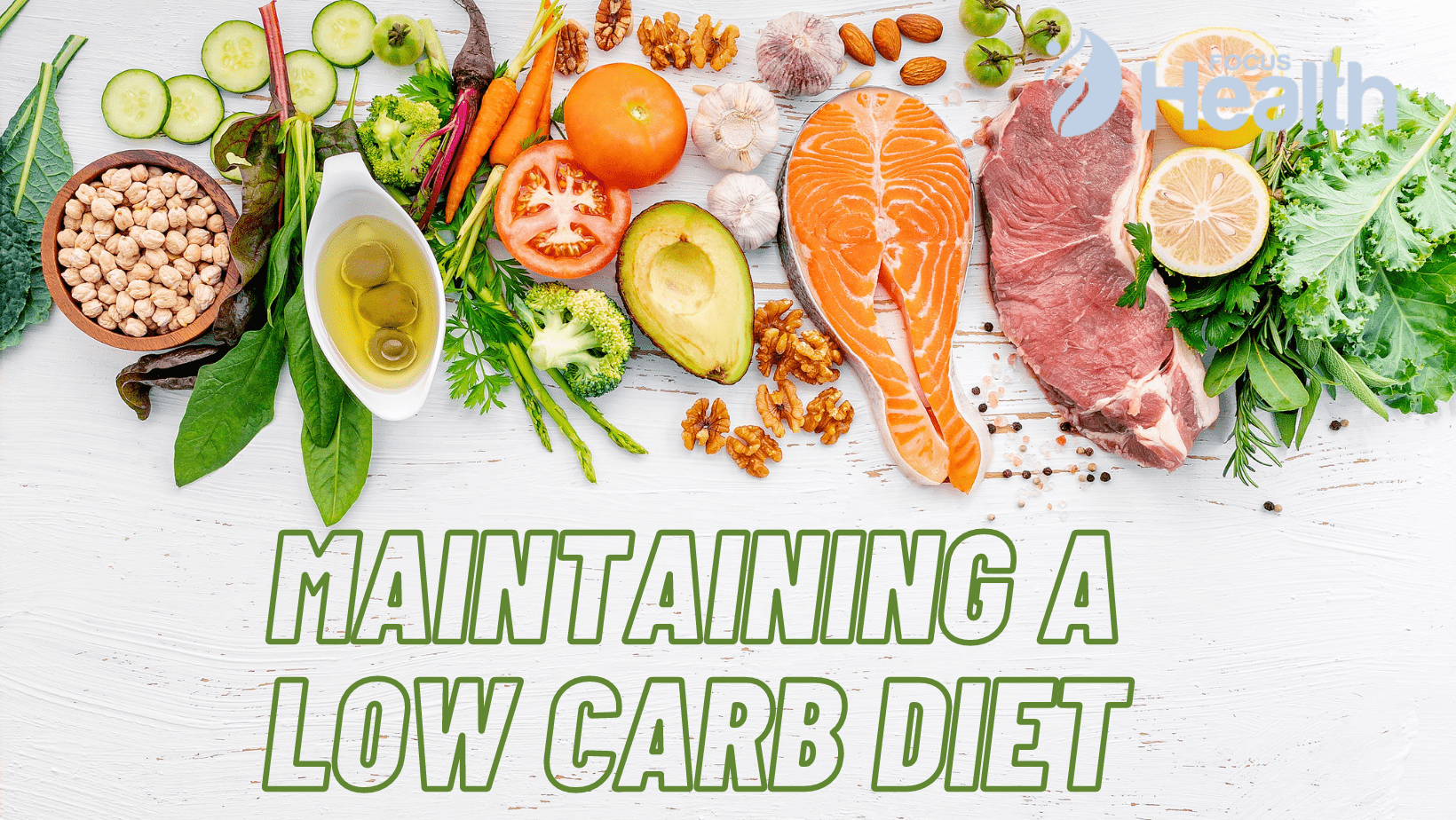
One significant benefit of a low-carb diet is that you will not have to worry about calorie intake. In addition, you will not have to keep track of your calories.
This is due to the fact that sustaining a low-carb diet is all about the number of carbohydrates you consume via your meals. With this diet, you must have a plan that specifies how many carbohydrates you should consume every day.
This plan will also include additional dietary ingredients that you should consume to supplement your diet. The goal is to limit your carbohydrate consumption while also lowering your sugar and insulin levels. Your body will then have to burn the fat that has been accumulated in your body, causing you to lose weight.
To build the finest diet to help you sustain a low-carb lifestyle, you must be aware of five basic and easy-to-implement guidelines.
These are recommendations to assist you in making the most of your diet. In this manner, you may be certain of achieving excellent weight loss outcomes.
First, you should have your doctor evaluate your health. This is the first step you must do before embarking on your dietary strategy. Consultation with your doctor is a fantastic approach to determining the appropriate food categories to include in your diet. The doctor will advise you on which foods to avoid, as well as how to design your diet menu.
Second, you must have a goal of living a low-carb diet. The objective of any low-carbohydrate diet is to reduce weight. Setting your major aim will assist you in incorporating your diet into your lifestyle. You will learn what nutritious items to include in your diet in order to effectively achieve your long-term weight loss goal.
Third, in order for your diet plan to succeed, you must be motivated to stick to it even when confronted with temptation. You must find a means to remind yourself of your objective. Thinking about how you will feel or look after you have lost weight is a wonderful motivator.
You must also adjust your mentality, be optimistic, and think that you can attain your weight reduction goal.
In addition, keep track of your food intake and weight on a regular basis to see how you’re doing. It is helpful if you keep a diary in which to record your discoveries. This logbook will assist you in determining whether or not your diet plan is effective.
Finally, once everything is said and done, you must be patient and persistent in your diet. Maintaining a low-carb diet is difficult. You will be successful, though, if you stick to your strategy and make it a habit. It will become a way of life and a part of you over time.
You may stray from your diet plan on occasion, as with any other. You should, however, get back up and proceed with your strategy. You may need to contact your doctor from time to time to confirm that you do not have any health concerns and that your diet is performing properly.
Common Mistakes On A Low Carb Diet

It is not necessary to attend a class to learn about the most frequent low-carb diet blunders.
In this application, carb refers to a nutritional nutrient (carbohydrate) found in foods such as potatoes, bread, puff cakes, and so on. The following are some of the most frequent low-carb diet blunders.
Obtaining incorrect information – Some people believe that following a low-carb diet entails eating meat every day. This is incorrect; everyone has to know how to limit carbs, which foods contain carbohydrates, and how to follow a low-carb diet.
Giving up in the midst of the procedure – There are several techniques to low carb diets, and there are difficulties at first. It is important to choose which strategy is best for you in order to prevent giving up in the midst of the procedure. For example, some of the complications that emerge Many folks are scared of a car crash, so they back down at first.
Inadequate fat intake Because many people associate low carb with low fat, this might be misconstrued as a low carb diet. People may tolerate low-fat diets at first, but as time passes, they will use up their own body fat and become extremely hungry. As a result, when on a low-carb diet, it is critical to supplement your body with fat.
Inadequate veggies in the diet – When dieting on a low carb diet, some individuals neglect to include vegetables and fruits in their diet. This will be detrimental in the long run since low carb dieters should consume a lot of vegetables and fruits, particularly low sugar fruits.
Too many calories – Counting calories on a low-carb diet is pointless. This does not imply that one must continue to eat simply because he or she is consuming low-carb meals. It is recommended that you only eat when you are hungry and quit when you are full.
Poor planning – Sticking to a new eating plan might be difficult at times, and one may find themselves doing what they used to do. As a result, it is recommended to prepare ahead of time in order to ease free adoption of the new eating habit, which involves knowing what to eat and when to consume it.
Utilization of low carb packaged goods – It is important to understand the components when purchasing packaged low carb meals. The majority of them include maltitol, a harmful sugar that is not necessary for many people. As a result, these packaged low carb meals must go through
cautious experiments
Lack of diversity – While there are a plethora of low-carb meals available, the only thing to avoid with a low-carb diet is sugar and starch. Every cuisine around the globe has a low-carb option, and the majority of recipes can be described.
Inadequate fiber in the diet – Eating vegetables and fruits helps to ensure that one consumes enough amounts of fiber. However, failing to consume vegetables and fruits diminishes the body’s fiber intake, which may be detrimental in the long term.
Start A Low Carb Diet Today

A low-carb diet, as we’ve learned throughout this book, restricts our consumption of starchy vegetables, fruits, grains, bread, and sweets. A healthy quantity of carbohydrates in the diet provides the body with much-needed energy. The issue, as we all know, is that eating too many carbs will cause your insulin and sugar levels to rise! We’ve covered the fundamentals of what a low-carb diet is. We discussed the advantages of a low-carb diet as well as typical pitfalls. Now we’ll wrap things up with some pointers on how to get started on a low-carb diet right now!
Tip #1
Choose foods that cause a low-glucose reaction when you go grocery shopping. Apricots, apples, broccoli, asparagus, cauliflower, Brussels sprouts, cherries, celery, grapefruit, cucumber, green beans, mushrooms, lettuce, plums, onions, spinach, sweet peppers, strawberries, zucchini, and tomatoes are among the foods having a very low glycemic index. Oranges, orange juice, grapes, cantaloupe, pears, peaches, yams, pineapple, and watermelon are foods with a moderate glycemic index. Avoid foods with a high glycemic index, such as raisins, potatoes, maize, carrots, beets, and bananas.
Tip #2
Snack wisely! Just because you’re on a low-carb diet doesn’t mean you have to munch on deli meat or cheese. Try low-carb snacks like walnuts, hard-boiled eggs, pecans, fresh vegetables with low-fat dips, and ricotta cheese. Keep an eye out for the amount of saturated fat and calories in the snack you intend to consume. Choose low-fat dairy products and keep quantities under control.
Tip #3
Remove any carbohydrates-rich items from your diet. Examine your refrigerator/pantry for unhealthy items such as pastries, soft drinks, and potato chips. After the trash, it’s time for the convenience meals! Take out all rice, pasta, bread, and grain goods. If you must have bread, choose whole-grain or whole-wheat varieties. Make each and every carb count!
Tip #4
Consume lots of water. Water not only keeps you hydrated, but it also prevents cravings and constipation. Make it a habit to drink 8-10 glasses of clean, sanitary water every day.
Tip #5
Take your time reading the labels! You may monitor the number of carbohydrates in grams in all the items you eat by paying attention to the labels. This is a wonderful strategy to monitor your daily meal size and carb intake.
Tip #6
Stick to whole foods. Avoid low-carbohydrate “alternatives” like pre-packaged energy bars or snack bars. Eat fat if you find yourself yearning for sweet foods. If you want to have eggs for breakfast, for example, cook them in butter. Cook your own meal instead of purchasing it from a fast-food restaurant.
Remember, if you want your diet to work, you must plan it carefully and exercise at least 5 days each week for 45 minutes. This is true for whatever diet you choose to follow. Begin today to lose fat in a low-carb manner.

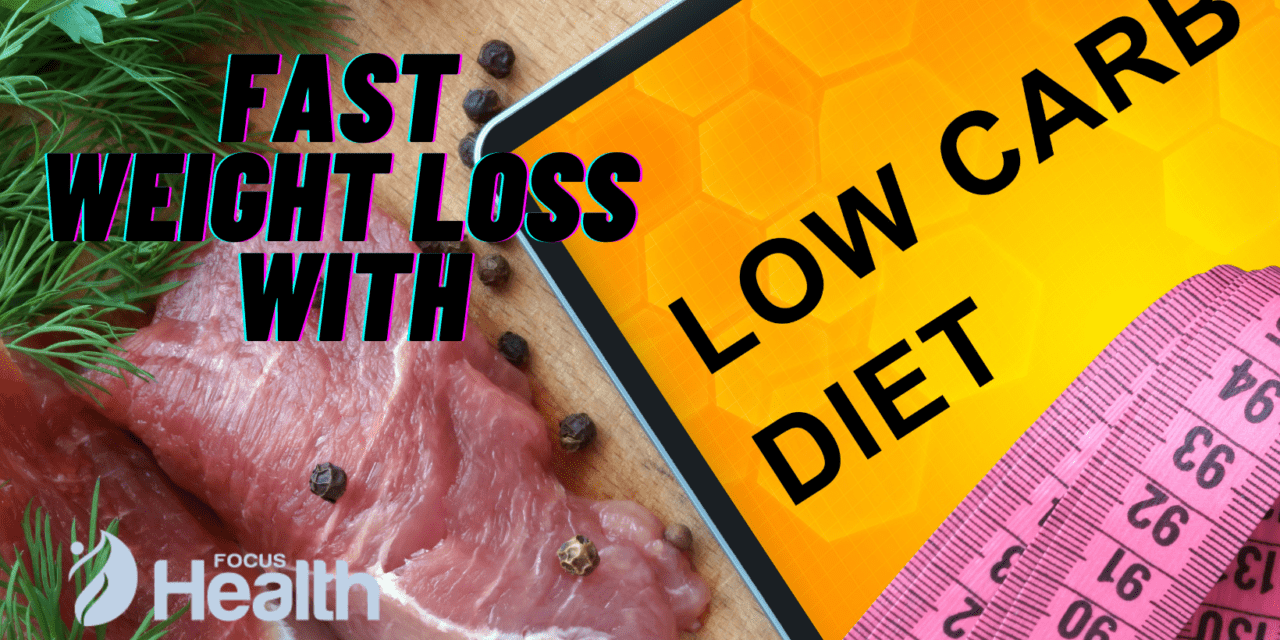



Recent Comments